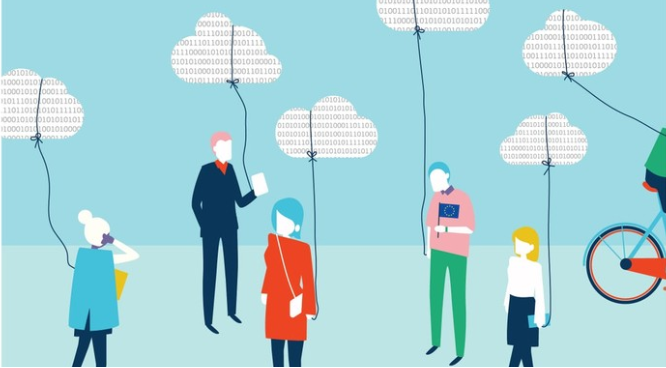Kristallnacht, or simply Pogromnacht, occurred 80 years ago on November 9-10, 1938. The Pogrom was…
From Ping Pong to Zoom Pings: Engaging Your Remote Team in the Age of Digital Distraction
People are more productive working at home than people would have expected. Some people thought that everything was just going to fall apart, and it hasn’t. And a lot of people are actually saying that they’re more productive now.” – Mark Zuckerberg, CEO of Facebook.

In the last decade, the concept of remote work has shifted from a niche privilege to a mainstream business practice. Initially adopted by tech giants and forward-thinking startups, remote work was seen as an innovative way to attract talent by offering flexibility and work-life balance.
However, the COVID-19 pandemic catapulted this trend into a global movement, making remote work a necessity rather than a choice. According to a 2022 study by Gartner, 47% of knowledge workers were working remotely at least part of the time, a significant increase from just 30% in 2019. However, the number of people who work from home is expected to decrease over the next few years. By the end of 2023, it’s estimated that only 9% of all workers around the world will be working remotely.
Yet, According to the latest projections, it is expected that approximately 32.6 million individuals in the United States will be working remotely by 2025. This accounts for roughly 22% of the overall workforce in the country.
This paradigm shift has changed not only where we work but also how we work. The rise of digital technology has enabled seamless communication and collaboration, regardless of physical location.
Cloud-based platforms, video conferencing tools, and collaborative software have become the backbone of modern workspaces. As businesses adapt to this new normal, the trend towards remote work shows no sign of slowing down.
Positive and Negative Impacts on Engagement
The transition to remote work has had a profound impact on employee engagement, with both positive and negative facets. On the positive side, remote work offers unprecedented flexibility.
Employees can design their work schedules around their personal lives, leading to improved work-life balance and overall job satisfaction. This flexibility has also opened doors for companies to tap into a global talent pool unhindered by geographical constraints.
However, remote work has its challenges. The lack of physical interaction can lead to feelings of isolation among employees, impacting team cohesion and collaboration.
According to a market survey in 2023 by Great Place To Work®, which involved approximately, 42% of the employees who work fully remotely expressed a lower likelihood of feeling a sense of purpose in their organization. These remote workers also reported a lower likelihood of feeling comfortable expressing their true selves in their work environment. Furthermore, the blurring lines between personal and professional life have led to increased instances of burnout, with remote workers often finding it hard to ‘switch off’ from work.
The evolution of remote work is a multifaceted phenomenon, offering both opportunities and challenges. As we move forward, understanding and addressing these aspects becomes crucial for businesses to harness the full potential of their remote workforce.
Insights from the Industrial Revolution and the Impact of AI
The evolution of remote work can be better understood by drawing parallels with past technological transformations.
The Industrial Revolution, for instance, dramatically altered the workforce landscape, shifting the focus from agricultural work to factory-based jobs.
Similarly, the advent of artificial intelligence (AI) and automation in the 21st century has reshaped job roles and skill requirements. These historical shifts underscore a recurring theme: the adaptability of the workforce to technological advancements.
The integration of AI in the workplace, especially in a remote setting, has streamlined many processes, from data analysis to customer service, freeing human workers to focus on more creative and strategic tasks.
However, this shift demands that the corporations continuous learning and up skilling, ensuring that employees remain relevant and competitive in a rapidly evolving job market.
This, in turn, can lead to increased productivity, job satisfaction, and employee retention rates. Therefore, it is imperative for corporations to prioritize employee up-skilling and invest in their future growth and success.
As AI continues to evolve, its impact on corporate strategy is profound and far-reaching. Corporate executives must recognize different imperatives like:
Corporates should encourage a culture of innovation within your organization, fostering an environment where employees are empowered to embrace change and explore new ideas. This will enable you to adapt swiftly to emerging technologies and stay ahead of the competition.
Second, corporations must invest in retraining and up skilling their workforces for the jobs of the future. The Industrial Revolution ultimately created more new jobs than it eliminated, but workers had to adapt to new roles. Companies that proactively retrain their employees for AI-related jobs will gain a competitive advantage. Those that do not invest in developing talent for the AI age risk losing highly skilled employees and facing labor shortages.
Applying Historical Lessons to Remote Work
The key takeaway from these historical shifts is the importance of adaptability. Companies and employees who embrace change and are willing to evolve are more likely to thrive. For remote work, this means adapting to new ways of communication, collaboration, and management.
Adapting Communication Strategies for Remote Teams
Effective communication is the backbone of successful remote work. In a digital environment, clear and concise communication becomes even more critical.
Companies are now investing in training programs to help employees enhance their digital communication skills, ensuring that messages are not only conveyed but also correctly interpreted in the absence of face-to-face interactions.
Addressing Isolation and Burnout
The issue of isolation and burnout in remote work is a significant concern. To combat this, companies are developing strategies like regular virtual check-ins, creating online communities for social interaction, and encouraging frequent breaks and offline time.
Recognizing and addressing these challenges is essential for maintaining a healthy and engaged remote workforce.
Technology and Tools for Remote Engagement
The success of remote work heavily relies on the right technology and tools. Collaboration platforms like Google and Microsoft Teams have become indispensable in a remote work environment, facilitating seamless communication and project management.
Beyond just work-related tools, companies are also exploring virtual team-building activities using platforms like Zoom and Gather to foster a sense of community and belonging among remote employees.
These activities range from virtual coffee breaks to online escape rooms, offering a digital space for informal interactions that are vital for team cohesion.
Overcoming Challenges of Digital Communication
While digital tools have made communication more accessible, they also come with challenges. The absence of non-verbal cues, combined with the misinterpretation of corporate messages, can result in employees experiencing misunderstandings and confusion.
This can occur due to the lack of clarity in communication or an inability to read subtle nuances in the message being conveyed. It is important for corporations to be aware of these challenges and to take steps to mitigate them, particularly in today’s highly digitized and remote work environments..
To address this, companies are emphasizing the importance of empathy and clarity in digital communications.
Training in writing explicit emails, conducting effective virtual meetings, and understanding digital etiquette are becoming part of employee development programs.
Additionally, the use of video calls for more nuanced conversations helps in bridging the gap caused by the absence of face-to-face interactions.
Balancing Flexibility and Structure
The key to a thriving remote work environment lies in balancing flexibility with structure. Flexible work policies need to be thoughtfully implemented, taking into consideration the diverse needs of the workforce.
Companies like Microsoft and Bank of America have set examples by creating comprehensive remote work policies that outline expectations clearly while allowing employees the flexibility to work in a way that suits them best. Microsoft’s approach demonstrates how large companies can offer flexibility while maintaining a structured and accountable work environment.
Accountability in a remote setting can be challenging but is essential for productivity. Setting clear goals, having regular check-ins, and using project management tools help maintain accountability.
Trust plays a pivotal role in this setup; micromanagement is counterproductive. Encouraging autonomy and providing the right tools for self-management can lead to higher productivity and job satisfaction in a remote environment.
Conclusion
The pandemic has accelerated the evolution of remote work, bringing both challenges and opportunities.
As we move forward, the lessons from historical and technological transformations, coupled with the right technology and strategies, can guide us in creating more engaging and productive remote work environments.
For those navigating the complexities of remote work, a cup of Mutombo coffee can be the perfect companion to energize your workday. Whether you’re collaborating online, balancing tasks, or taking a well-deserved break, let Mutombo Coffee be a part of your remote work journey.
Founded by NBA Hall of Famer and global humanitarian Dikembe Mutombo and social investor Bob Bush, Mutombo Coffee was created to amplify the mission and values of our corporate partners while supporting African and Latin American farmers.
References



